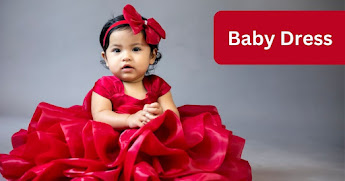Beyond Fashion: The Psychological Impact of Baby Dressing
Beyond Fashion: The Psychological Impact of Baby Dressing
Dressing your baby goes beyond just selecting cute outfits; it can have a profound impact on their early development. The choices you make in terms of colors, textures, and styles can influence your baby's sensory experiences and contribute to their overall well-being.
Colors and Moods:
The colors you choose for your baby's dresses can have a subtle yet significant impact on their mood and temperament. Soft pastel colors like light blue and pale pink are often associated with calmness, while vibrant colors like red and yellow can stimulate a baby's senses. Consider the emotional and psychological effects of colors when selecting dresses for different occasions.
Textures and Sensory Development:
Babies explore the world around them through touch, and the textures of their clothing play a role in this exploration. Opt for dresses with varied textures, such as smooth cotton, fuzzy fleece, or knitted fabrics. This not only adds a tactile dimension to their wardrobe but also supports their sensory development.
Expressing Individuality:
As your baby grows, they begin to develop their own personality. The clothes you choose can be a fun and expressive way to showcase their individuality. Consider incorporating patterns or motifs that resonate with your baby's emerging interests. Whether it's animals, stars, or playful prints, let their wardrobe reflect their budding personality.
Building Positive Associations:
The act of dressing your baby can become a bonding experience. Create positive associations by making dressing time enjoyable. Sing a song, share smiles and laughter, and use the opportunity to connect with your baby. This positive reinforcement can contribute to a healthy parent-child relationship.
Cultural and Traditional Influences:
Many families have cultural or traditional preferences when it comes to baby dressing. Embracing and incorporating these elements into your baby's wardrobe can be a meaningful way to connect with your heritage. It also allows you to share your cultural identity with your little one from an early age.
Environmental Considerations:
With increasing awareness of sustainability, parents are becoming more mindful of the environmental impact of baby clothing. Choose dresses made from organic and eco-friendly materials to minimize the ecological footprint. This not only benefits the planet but also sets an early example of responsible consumption for your child.
In conclusion, dressing your baby is not only a practical necessity but also an opportunity for creativity, expression, and positive interaction. Paying attention to the psychological aspects of baby dressing can enhance your parenting experience and contribute to your baby's holistic development.

Comments
Post a Comment